Yoga has such an incredibly long list of mental, physical, and spiritual benefits – So many in fact that I couldn’t fit them all in to one (readable) blog post if I tried.
I decided to start practicing myself after a particularly stressful period in my life that left me rather unhealthy and possibly even a little sick. Eventually, it came to a point where I absolutely needed to do something, if there was one thing I knew, it was that I wanted to heal myself – I didn’t want to be prescribed a chemical treatment for something that was clearly a spiritual imbalance. And that’s where my curiosity about yoga and meditation was born.
Can You Learn Yoga at Home?
I took a couple of different kinds of classes, but where I live, I find them to be incredibly overpriced, snobbish-type places that are more concerned about you being a raw-eating tree hugger than they are about the actual practice (Don’t get me wrong – Everyone’s entitled to have their own opinion, but I was trying to heal my soul, not join a cult). Now, I’m not saying that all types of yoga classes are like that. Certainly, they’re not. All I’m saying is that the ones that were around me at the time just weren’t my cup of tea.
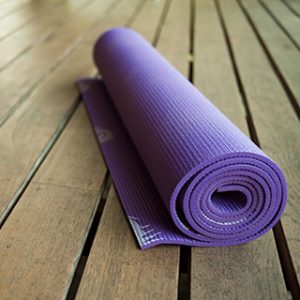
That’s when I decided to start learning yoga at home.
I actually thought that picking up the practice on my own would be a lot more difficult than it ended up being.
Here are what I consider to be the four things you need to do to get ready to start practicing at home and a few yoga poses you can use to get started right away.
Suppose you’re someone who hasn’t found a class you like yet, finds yoga classes to be too expensive, or plain doesn’t have the time to get to them when they’re offered. In that case, you might find this information to be particularly useful, especially if you’re looking for a mind-body-spirit balance.
Do Your Research
You’d be surprised at how many different yoga styles there are. Before you even begin practicing, you’ll want to research all the different types and pick one (or a couple) that appeals to you.
If you want to do more research about beginner Yoga styles, check out the article to help you pick out the ones you think you’d like the most. From there, you can get books and other resources that will help you learn about your favorite styles more in-depth.
 Set Your Space
Set Your Space
When it comes to learning yoga at home, it’s ideal if you can set up an entire room in your house dedicated strictly to your practice, but obviously, that won’t work for everyone. A general rule is that you’re fine as long as you have enough space to set up your yoga mat and stretch out without kicking or punching anything.
Just make sure to double-check any floor space around you for toys and other small objects before starting to prevent any accidental injury by them. You might also want to set up some calming music to help you with your practice if you’re not a fan of being in silence for long periods of time.
Personally, I practice yoga outside as much as I can; I find the peace and calm of nature helps me relax and re-energize more. However, with winter approaching much more quickly than I’m ready for, I’ll be forced to move into our spare room soon. It’s been set up with mantras and calming pictures to help me relax, and I also burn soy candles and incense to help me meditate. You might have to play around with things a bit (perhaps shift your furniture around a little), but getting the perfect yoga space (even in small apartments) is easier than you anticipate. So basically, to answer the question “Can you learn yoga at home?“, the short answer is definitely YES.
Remember to Meditate
Yoga has many therapeutic effects. Meditation and yoga go hand in hand, but for some reason, that’s never mentioned in most of the yoga videos you find online. It should always be remembered when you’re practicing, though, because it’s essential to relax you’re mind and regroup while you’re resting your body. So if you want to learn yoga at home and get a great start, meditation is a good beginning.
We’ll cover meditation is another article because it absolutely deserves one – It comes with an incredibly lengthy list of benefits that range from helping relieve allergy symptoms to reducing stress and boosting your energy. Time constraints will happen, but you can’t put one on your health. Just get in as much time as you can, and I assure you that once you start to notice the many benefits you’re getting, you’ll be making time for more.
Pace Yourself, But Don’t Get Lazy
What I find great about learning yoga at home is that I can go at my own pace and tailor everything to my daily needs. When you’re first starting, though, you should stick to the more basic poses, and once you’re comfortable with them and your flexibility has increased a little, work your way up to something a little more advanced. Remember that you know your body better than anyone. A stretch should be resistant, but it shouldn’t be painful, so you’ll need to trust your instincts.
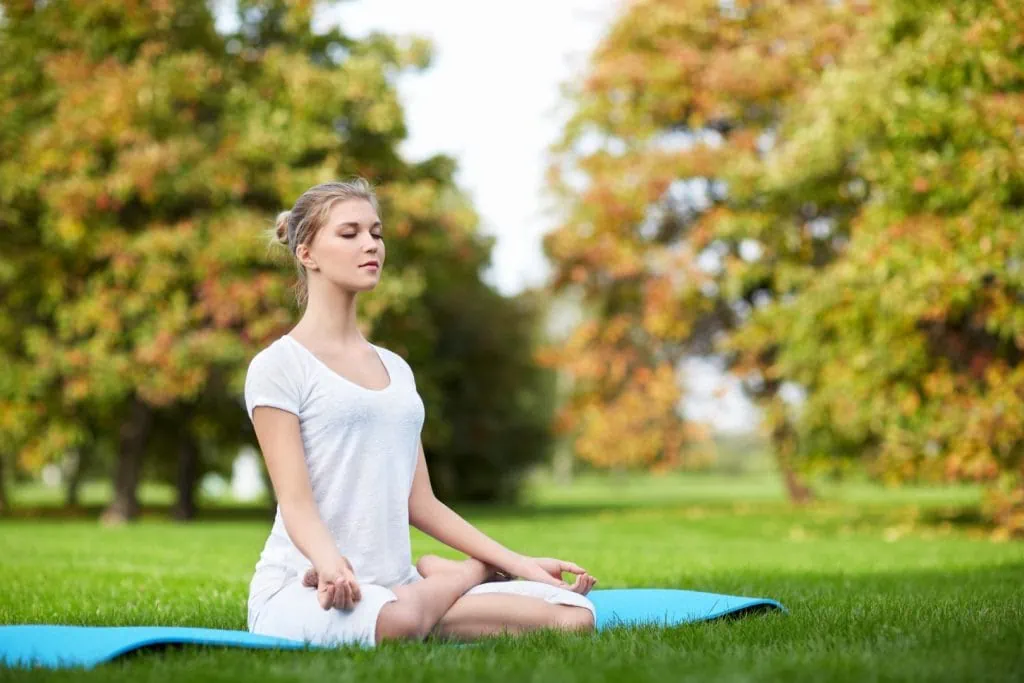
You must be careful if you’re someone who’s physically active and fit, as you’re more likely to want to push yourself beyond your comfort zone – Remember, though, that yoga isn’t at all the same thing as running or lifting weights. Take it easy and learn your limits.
Many people often ask me, surprised “Can you learn Yoga at home?“. First of all, learning yoga at home requires dedication and drive. You will be the only person responsible for making sure that you do yoga and meditate daily or weekly. You won’t have a class to attend every week or a teacher telling you what you must do. Some people do, in fact, need that structure, and to be completely honest, they probably won’t do very well at all on their own at home. Neither way is the right way to go about it – Do whatever works best for you.
3 Yoga Poses For Beginners And Their Benefits
Once your studio (or space) is all setup and you’ve changed into comfy (read: not too tight or too loose) clothes, you can officially start practicing and learning yoga at home whenever it’s most convenient for you. Here are three easy-to-learn basic poses that can help improve your flexibility and a host of other things.
Vrikshasana (Tree Pose)
This is one of the most widely used yoga poses because there are so many different versions. Ideally, the goal is to stand with your arms at your sides, shift your weight onto one leg, and place the sole of your other leg’s foot on the inside of your thigh, keeping your hips forward. Focus.
Once you’re balanced, bring your hands together with your palms in front of your chest. Inhale and extend your arms over your shoulders, separating your palms but keeping them facing each other and holding for at least thirty seconds. Bring your palms back together and put your leg down. Repeat on the other side.
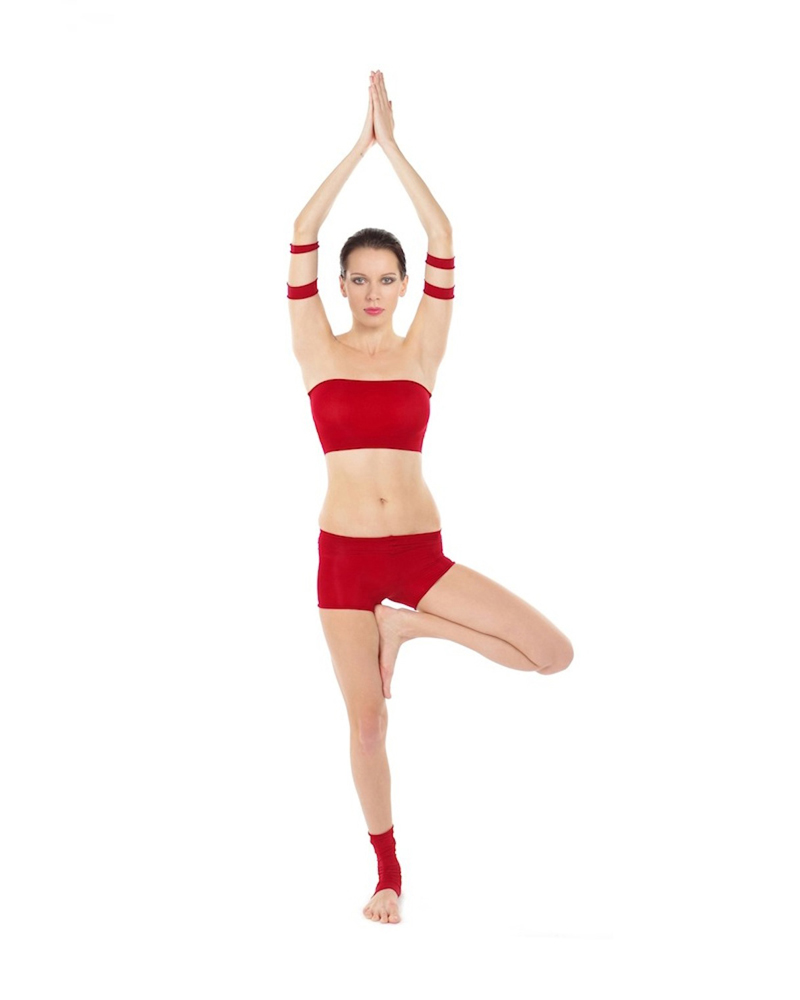
Modify it: If you can’t keep your balance with your foot on your thigh (I know that I certainly couldn’t at first), you can place it on your calf or even on your ankle with your toes touching the ground to help stabilize you.
Health benefits: Aside from improving your physical balance, this pose can also help you achieve balance in other aspects of your life. It strengthens the ligaments and tendons in your feet, strengthens and tones your legs and buttocks, enables you to establish pelvic stability, and strengthens your hip and leg bones because it’s so weigh bearing. It also helps build confidence and self-esteem.
Virabhadrasana 1 (Warrior 1 Pose)
There are actually three versions of the warrior pose. Still, the first version is absolutely perfect for beginners – Simply stand in a lunge with one leg forward (so that the knee of that leg is directly above the foot) and engage your legs by pressing through your feet. Bring your hands to your hips and square them, as well as your shoulders straight ahead, then relax your shoulders down your back and gently draw them together.
Inhale and lift your arms over your head, bringing your palms together if possible. Reach through your arms – drawing strength through your sternum rather than from your sides. Keep your shoulders relaxed, and chest lifted as you breathe deeply. Hold for at least a minute before letting your arms down with an exhale.
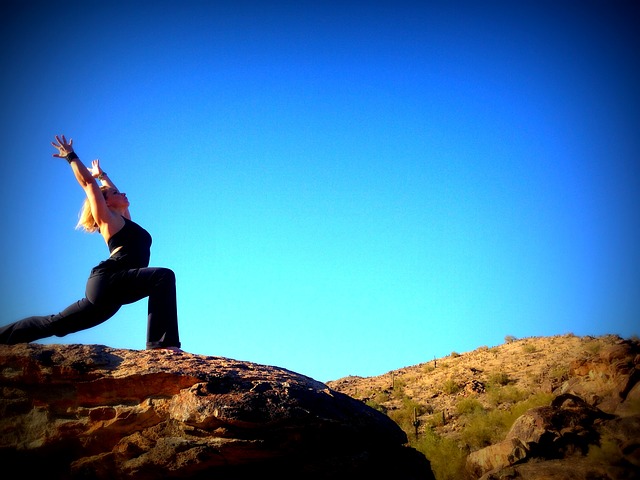
Change it: If you can’t place your palms together when you reach the sky, then don’t. Just reach, and one day, you’ll build the flexibility. If you want to deepen the stretch, keep your palms together and gently arch your back until you’re looking at the ceiling.
Health Benefits: This pose will give your arms, legs, shoulders, neck, back, belly, groin, and ankles a good strengthening and stretching, but that’s certainly not all. It’ll help open your hips, chest, and lungs, improve your focus, balance, and stability, encourage good circulation and respiration, and energize your entire body.
Balasana (Child’s Pose)
This is probably one of my favorite poses. Not only is it easy to do, but you also feel an incredible sense of mental, physical, and emotional relief while doing it. Sit up comfortably with your knees together and your butt on your heels, then roll your torso forward until your forehead is resting on the mat in front of you while exhaling slowly.
Lower your chest as close to your knees as possible and extend your arms out before you can feel your shoulder blades stretching across your back. Pay attention to your breathing and allow yourself to relax more with each breath, feeling your tensions melt away.
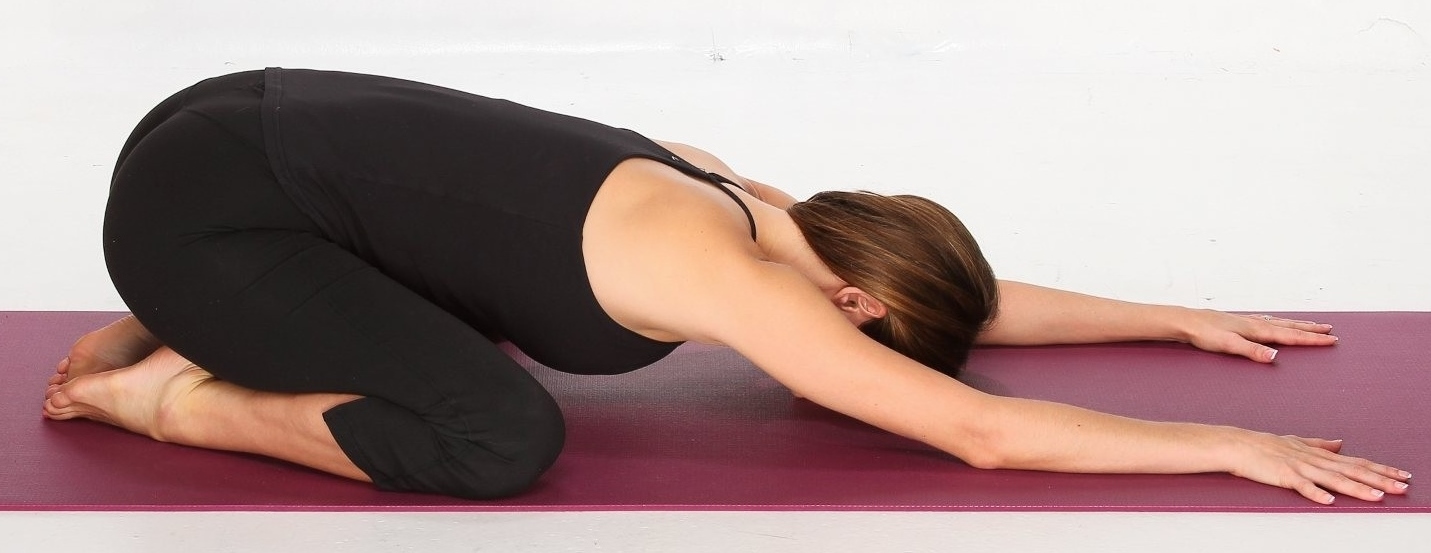
Modify it: If you have shoulder problems, rest your arms at your sides with your palms up and focus on feeling the stretch in your spine. If you have problems sitting on your ankles for a long period, feel free to place a thickly folded blanket between your thighs and calves. If you’re pregnant, keep your big toes together and your knees hip-width apart to make room for your belly.
Health Benefits: Obviously, this pose will help stretch and lengthen your spine, but that’s not all it does – It helps alleviate stress and anxiety, flexes all of the body’s internal organs and keeps them in good working order, can relieve neck and/or lower back pain, normalizes circulation throughout your body, encourages solid and steady breathing, and a whole lot more. This is a perfect pose to practice daily, but can also come in handy if you’re experiencing dizziness and/or fatigue.
There you have it! You’re now equipped with absolutely everything you need to start learning and practicing yoga at home. If you’d like to take online yoga classes from home, here’s a site with a whole bunch of free classes (I actually use it when I don’t feel like putting anything together myself so that I can vouch for its validity).
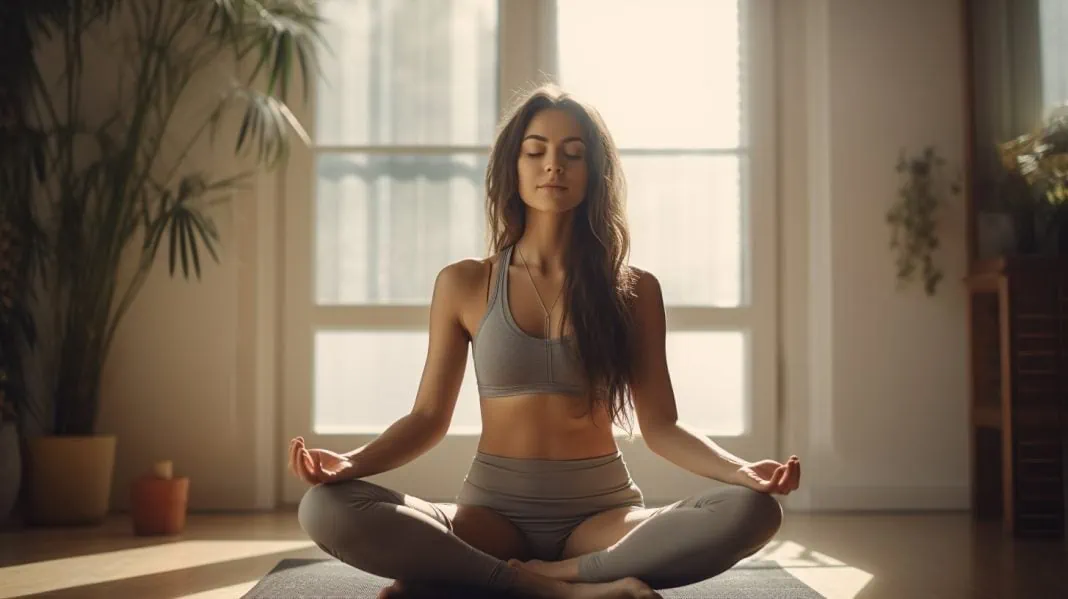
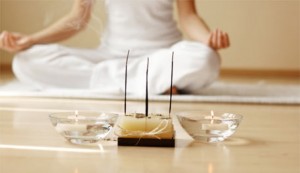 Set Your Space
Set Your Space